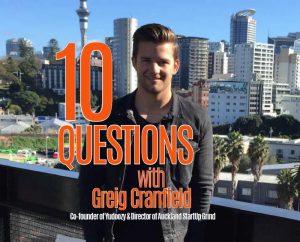
I once heard Social Media Marketing described as the Wild West… a new frontier with endless possibilities, while simultaneously no one really knows what they’re doing.
Over the last several years Social Media best practices have begun to take shape, especially with heavyweights such as Google and Facebook creating and updating new ways (nearly daily!) in which their platforms can be used to market. So it’s not as wild as it once was; although we still have a long way before it’s completely tamed.
The great thing about marketing on these platforms is that it now the most cost effective it has ever been to show your product to a previously unfathomably large audience. This fact alone is why every business needs to have a social media (or “social” for short) presence.
Think of it as survival of the fittest. If your shop/business/product isn’t active online, then there will be one similar that is and they will take the business you could have gotten.
Facebook use accounts for 20% of the time the average Internet user spends online, and two-thirds of Facebook’s users consume at least some of their news through the platform. Facebook is one of the most valuable marketing channels you can be on! It has 3 billion active users and 2 million active Kiwi users. That is a huge amount of attention from a huge amount of people.
Defining social media
The lines of what is considered social media are constantly blurring but currently I would consider social media to be any online platform where you can share things with a community including Facebook, Instagram, Twitter, Snapchat, LinkedIn. Sharing an email is a social act. (Yes, Email Marketing is part of Social Media). Do you have a business website? Do you write posts on that site? That’s blogging, which is… guess what… social.
Social Media is an integral part of modern, daily life and covers anything that you do online that involves sharing or interacting with other users.
Five social media best practices for your business
1) Make social sharing buttons readily available.
This can seem like basic advice but it’s something I see so commonly missing on websites. If you want people to share, you need to give them a means of doing so! Add social sharing buttons at the top and bottom of your post. Add them at the top and bottom of your website. Make it as easy as possible to find and follow you on every channel you’re on. Don’t forget to make sure your social sharing works on mobile – remember that mobile devices are now more popular than computers. Everything needs to be easy to use and clear to read from a mobile point of view as well as the larger computer screen.
2) Stick with it.
I cannot emphasise this enough. Think of Social Media like the gym: doing it once in a “blue moon” might assuage your guilt but it’s basically useless for seeing results. I’ve found that it helps a lot of people to put a few hours aside once a week and do everything at once and then schedule it to trickle out over the next seven days. Facebook has a great-inbuilt scheduling system, but for other platforms, there is an array of third party programs. I find HootSuite the best. Sticking with regular Social Media posts will slowly but surely get you a following.
3) Do not just push advertising messages.
So many companies are guilty of this, big and small. People don’t want to log onto their newsfeed and see advertising spam – would you? They get that enough in their day-to-day life. People want content that interests them. Try to build a community around your brand or company. What are your ideologies? What makes you smile? Do you have any funny work stories? What content would you want to engage with yourself? Post content that’s worth posting, that will brighten up someone’s day or make them think. If your page clearly shows what your company does and sells then clients and or/sales will come organically without having to push what you’re selling into people’s faces. Get people to want to check out what your page is about. The word ‘organic’ is a word you will hear often about great Social Media.
4) Remember that social media changes in an instant – and act accordingly.
We are consuming so much information so quickly, that things need to stand out to be noticed. That’s what “create shareable content” means. If what you’ve put out there isn’t eye-catching, thought provoking, beneficial or relatable – no one really cares.
I’ve had clients worry that whatever they post will be scrutinized by their audience and thus become too scared to post. The reality is (within reason, obviously don’t say something horrible or you will get a backlash) it’s more like trying to get someone’s attention at a concert rather than an empty room. You’re better off putting lots of content out there so more people consume it. You would need to be posting 5-10 times a day for people to start getting really annoyed.
5) Tailor to your audience.
Chose platforms that reflect your brand and ideal consumer. If your customers are “house wives aged forty and over”, then Snapchat probably isn’t the way to go, and will waste your time, resources and energy. Research shows however, that these women are very strong Facebook users.
Knowledge is key. Record and analyse your successes and failures, and then adjust your Social Media marketing plan in response. Exactly like any other form of marketing, know who you are targeting.








